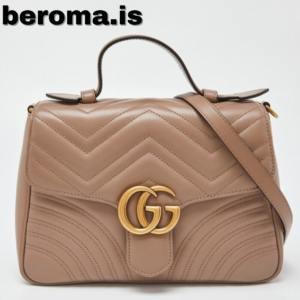 The allure of luxury goods, especially in the realm of handbags, is undeniable. For fashion enthusiasts and bargain hunters alike, the promise of owning a designer purse at a fraction of the cost is tantalizing. Yet, the market is not just flooded with counterfeit items; it now boasts a new class of replicas known as “super fakes,” the lines of distinction beguilingly thin. In this detailed exploration, we dissect the world of super fake handbags, shedding light on their characteristics, the ethical considerations that surround them, and what they mean for the luxury fashion industry.
The allure of luxury goods, especially in the realm of handbags, is undeniable. For fashion enthusiasts and bargain hunters alike, the promise of owning a designer purse at a fraction of the cost is tantalizing. Yet, the market is not just flooded with counterfeit items; it now boasts a new class of replicas known as “super fakes,” the lines of distinction beguilingly thin. In this detailed exploration, we dissect the world of super fake handbags, shedding light on their characteristics, the ethical considerations that surround them, and what they mean for the luxury fashion industry.
The Surge of “Super Fakes”: A New Breed on the Black Market
Understanding the Term “Super Fake”
The term “super fake” has positioned itself in the darker corners of luxury replication. It denotes counterfeit designer handbags that strive for an unprecedented level of accuracy, often surpassing mere resemblance to the original and emulating the materials, craftsmanship, and even serial numbers of the authentic products. These items are not accidental knockoffs; they are meticulously planned and manufactured to deceive even the most seasoned eye. The surge in super fake production has sprung from both advances in technology and the economic fallout of the pandemic, leading to a market that is no longer just a back-alley transaction but an organized, sophisticated facet of luxury counterfeiting.
Legal Ramifications and the Buyers’ Dilemmas
Purchasing a counterfeit item, such as a super fake handbag, might seem like a victimless crime to some buyers, a middle finger to exorbitant luxury brand prices. But the legal repercussions for buyers are not always explicit. Intellectual property laws vary, and while some jurisdictions are lenient, others can slap hefty fines or even jail time on individuals who knowingly purchase counterfeit goods. The narrative twists further when buyers, who believed they were purchasing the real deal, discover they now own an illegal item—often with no recourse for refund or recourse.
Standing Apart: How to Spot the Difference From Authenticity
Material and Craftsmanship Breakdown
The most glaring difference between super fake handbags and their authentic counterparts usually lies in the materials and craftsmanship. Leather quality tends to be a deal-clincher; the supple, durable leather of a genuine Louis Vuitton bag may become a stiff, uneven imitation in a counterfeit one. Craftsmanship intricacies such as stitching, hardware, and even lining can further differentiate the true luxury piece from its imposter. Inspection of these details, along with the weight and “feel” of the bag, can raise red flags for any would-be purchaser deciphering the real from the counterfeit.
Serial Number Snooping
Serial numbers and authenticity tags can be the counterfeiters’ Achilles’ heel. Super fake handbags often bear serial numbers without the corresponding registration in the fashion houses’ databases. Savvy buyers can use this to their advantage by cross-referencing serial numbers with manufacturers, or even researching if certain designs and manufacturing processes match up with the legitimate product.
Unpacking Ethical Stance: Is There Honor Amongst Luxury Thieves?
The Case for Supporting the Luxury Market
Luxury fashion is as much about the artistry and exclusivity of the product as it is about the brand. Supporting the luxury market provides jobs, cultivates craftsmanship, and upholds the standards that render these companies so economically potent. By purchasing super fakes, consumers may be contributing to the erosion of these cornerstones, not to mention potentially supporting criminal enterprises.
The Ethos of Fashion Ownership
Fashion ownership is a deeply personal expression and can be construed as a form of identity and esteem building. The allure of luxury fashion for many is aspirational, signifying milestones and achievements. However, the urge to own luxury goods can sometimes eclipse the economic reality for many consumers. This calls into question what is more important—the expression of identity or the authenticity of personal representation?
Closing Snap: Tackling the Super Fake Handbag Rock and Hard Place
The tug-of-war between consumer yearning for luxury goods and the ethical implications of supporting the counterfeit industry is an argument with no clean resolution. As the market for super fakes balloons, the conversation becomes increasingly imperative. Perhaps, the truest luxury for consumers will be the satisfaction in making informed, ethical choices.
In the end, each purchase—authentic or otherwise—carries a weight, either as support for the true innovators of the luxury space or as another brick in the wall of illegal, mimicry-loving markets. For those verging on the purchase of a super fake, it’s not just about saving a few dollars, but rather, understanding the ripple effect of their decision. Luxury should not be at the expense of legality or integrity.
However, like many issues of grey morality, the answer is never truly black and white. The invitation stands—to consumers, to brands, to legislators—to continue to unpick the threads and find sustainable, ethical paths in the world of fashion, or else risk the entire tapestry unravelling.